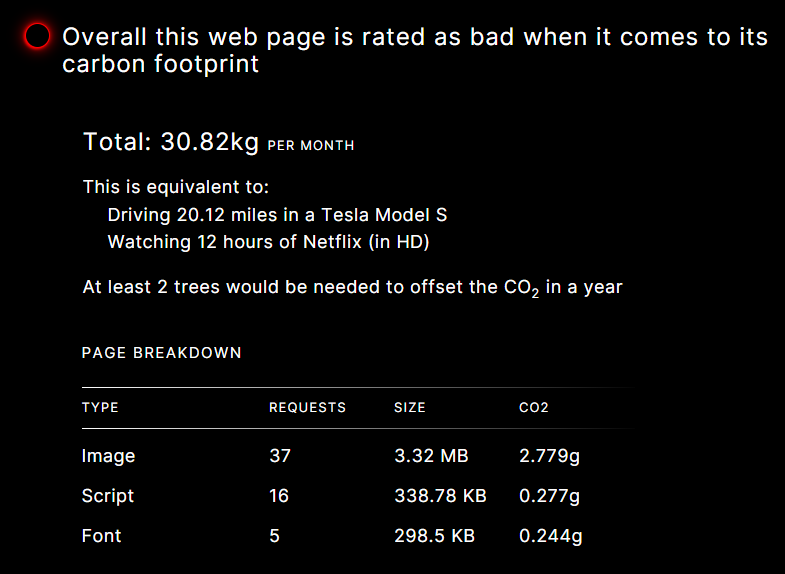Lesson 16Tools to check your website sustainability score
- Notion 97 - How to calculate a website’s carbon footprint
- Notion 98 - How to determine whether a website uses a green web host
- Notion 99 - Can you evaluate the carbon footprint and hosting sustainability of a website yourself?
- Notion 100 - How to check for other web sustainability metrics
- Notion 101 - Can you evaluate other sustainability metrics of a website yourself?
Notion 97
How to calculate a website’s carbon footprint
Target skills
The importance of calculating the carbon footprint of a website
Even though it may sound abstract, the link between environmental degradation and running a website can actually be measured by automated tools. Running a website requires expending power and energy. Power and energy, in turn, consume electricity. Consuming electricity leads to the production of CO2 emissions.
A website that embraces simplicity and cleanliness in its design is more sustainable as it requires less energy to run. Unfortunately, many of today's websites are ornamented with a wide variety of draining elements. These energy-intensive features are neither user-friendly nor environmentally sustainable.
Using automated tools can help you determine which website elements are the biggest culprits for creating a larger carbon footprint.
External tools for calculating a website's carbon footprint
We've singled out three websites you can use as automated testing tools to calculate the sustainability of a website. They are:
- Digital Beacon: https://digitalbeacon.co/
- Website Carbon: https://www.websitecarbon.com/
- Ecoping: https://ecoping.earth/
These tools break down the overall size of a website and the size of its different elements (images, videos, etc.).
Additionally, they calculate the amount of energy produced and CO2 emitted due to this size (per visit and month). To help you better visualise these metrics, the tools provide an equivalent energy-intensive activity. For example, if your website consumes 647kWh of energy annually, that's enough electricity to drive an electric car 4,138km. If it emits 317kg of CO2 annually, that's as much CO2 as boiling water for 41,619 cups of tea!
Each tool also suggests what the website can do to lessen its environmental impact, such as the number of trees to plant yearly to offset its carbon footprint.
To make the calculations more understandable, the tools have a ranking system for determining the overall unsustainability of each website.
Here's an example of how the website Digital Beacon breaks down a website's environmental impact:
